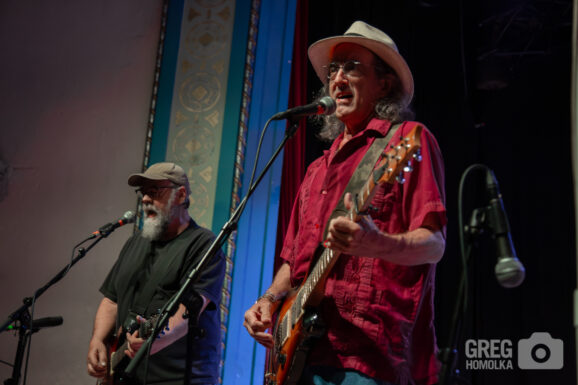Brandon Woody is the new trumpet voice in jazz who simultaneously sounds new and old. You’ll hear he is steeped in the tradition of such greats as Freddie Hubbard while bringing a fresh approach. Present also are the inextricable links to culture that infuse the music of artists such as Ambrose Akinmusire and Immanuel Wilkins. Nonetheless, reference points aside, Woody has forged his singular sound.
The Baltimore-born and based artist breathes his city’s roots into his music. One can practically hear the sounds of his neighborhood in some of these pieces. Note the classic, unmistakable Baltimore row houses in the cover art. Woody also brings a precise gospel inflection, directly from the Black church. This highly accessible, deeply passionate sound has been finely honed over the past seven years with his working band, Upendo, who join him on this auspicious Blue Note debut, For The Love Of It All. They are Troy Long (keyboards), Quincy Phillips (drums), and Michael Saunders (bass) with special guests Imani-Grace (vocals), Vittorio Stropoli (aux synth), the latter two appearing on just one track each.
Opening “Never Gonna Run Away” is an autobiographical ode to his city, which he returned to after dropping out of college. The simple melody becomes irresistible as rendered by Long’s piano and organ, Woody’s trumpet, and Imani-Grace’s delicate vocals. While it begins as a church-like hymn, the latter half, led by Woody’s spiraling trumpet, bursts into celebratory tones before returning to the reflective tones of the early section and its core message of faith.
“Beyond the Reach of Our Eyes” seeks to reveal what is beyond our immediate vision by beginning with memories. Woody had a morning ritual of sitting on the porch of his East Baltimore home, absorbing the sights and sounds of the neighborhood before practicing on his roommate’s piano passed down by a grandmother. In that space, Woody began to dwell on the concepts of energy that we can’t see and how many lives he might touch with his music. The piece has an unconventional structure of even and odd meters glued to a sturdy pattern established by Phillips and Saunders. Again, it begins with a hymn-like and singable melody with a passage, at least for me, that resembles a youngster practicing scales, but rather suddenly, Woody takes flight, blowing fiercely over Long’s comping until he decelerates, melting down almost just as quickly, restating the theme multiple times.
The smooth segue to “Wisdom; Terrace on St. Paul St.” makes it a companion piece, though more dreamy. The initial sustained tones evoke the idea of tuning into a distant memory. However, as the piece builds, Woody and the quartet grow more vibrant, seemingly excited by family history they’ve unearthed through photographs and memories of stories passed down by ancestors. In the final section, Woody’s resonant trumpet connotes both respect and reflection. These two pieces serve as the collective centerpiece of the album.
“Real Love, Pt. 1,” co-written by Long, is an unbridled release of emotion. Woody’s trumpet remains intense and unyielding practically throughout. Stropoli subtly expands the sound with on aux synth yet this highly energetic flow doesn’t result in a volcanic finale but in a unresolved note that seems awkward in the context of the entire album.
Woody’s music is deeply emotional and uplifting. It finds a balance between structure and freedom that’s oddly accessible yet forward-looking. His debut is unequivocally striking.







